Special Report
World's Most Valuable Publicly Traded Oil Companies
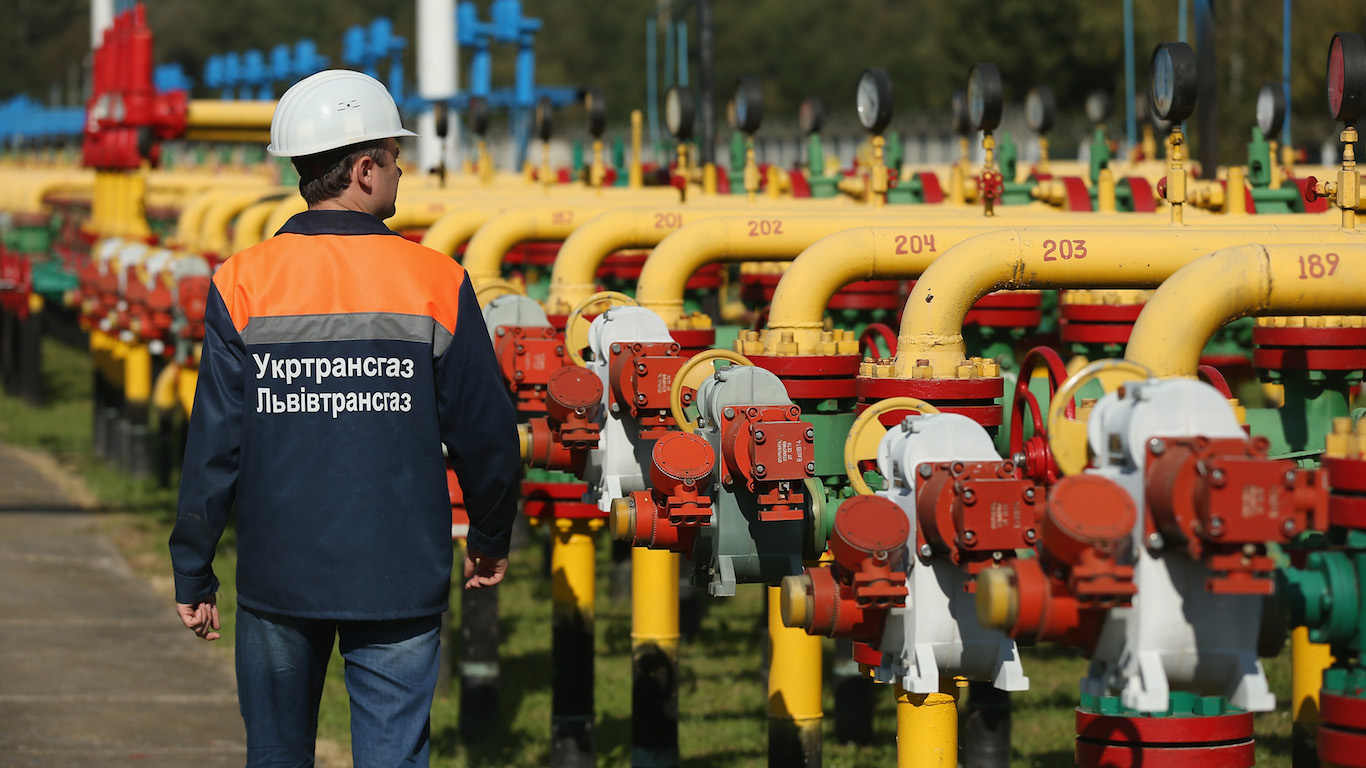
Published:
Last Updated:

The world consumed nearly 98.5 million barrels of oil every day in 2017. This year the U.S. Energy Information Administration (EIA) projects that consumption will rise to 100.2 million barrels a day. The average 2017 price for a barrel of Brent crude — the international benchmark grade — was $54.15. That’s about $1.95 trillion. In 2018, oil consumers will pay an average of $71.80 per barrel of Brent and spend a total of $2.63 trillion.
Global reserves of natural gas totaled more than 6.83 quadrillion cubic feet at the end of 2017. Because the market for natural gas is not international to the same degree that the oil market is, prices vary widely. In the United States, the 2017 average natural gas price for a thousand cubic feet was $2.96 at Louisiana’s Henry Hub, the main U.S. pricing point for natural gas. By comparison, a thousand cubic feet of natural gas cost $5.80 in the United Kingdom and $5.62 in Germany. The Japan/Korea price for liquefied natural gas (LNG) last year was $7.13 per million BTUs (roughly equal to a thousand cubic feet). Japan and South Korea import nearly all of their natural gas as LNG and the 2017 price was less than half what it was just five years earlier.
At the end of 2017, global proved reserves of oil totaled 1.697 trillion barrels, according to BP’s annual statistical review. In 2011, the World Bank estimated that about 90% of the world’s oil reserves and 75% of oil production were controlled by national oil companies (NOCs) owned or controlled by national governments. The ownership percentage of natural gas reserves are similar. There’s no reason to think these ownership ratios have changed significantly in recent years.
Publicly traded integrated oil & gas companies are valued to a large degree on the basis of their proved reserves. A proved reserve, by definition, is one that can with reasonable certainty (90%) be produced profitably at current prices. In the United States, the Securities and Exchange Commission (SEC) adopted rules that requires U.S.-traded companies to recalculate the value of their reserves every year. Companies also classify reserves as probable (meaning there’s a 50% certainty of profitable extraction at current prices) and possible (at least a 10% certainty of profitable extraction). Only proved reserves are considered by the SEC to be materially important for the purposes of meeting regulatory disclosure rules.
An integrated oil company is one that operates its own exploration and production (upstream) business as well as its own refining and marketing (downstream) business. There are a relative handful of such companies and 6 of the 10 largest integrated companies in the world are controlled by governments. The world’s largest state-owned integrated oil company , Saudi Aramco, has been examining an initial public offering (IPO) of about 5% of the company to raise $100 billion, the largest IPO ever and a deal that would value the company at $2 trillion. The IPO has been delayed at least into 2019 and there is some reason to doubt that it will occur even then.
Click here to see the world’s most valuable publicly traded oil companies.
Click here to see our methodology.

10. PetroChina Co. Ltd.
>Country: China
>Asset Value: $352.68 billion
>2017 Revenue: $237.94 billion
>2017 Profit: $1.16 billion
>Return on invested capital: 0%
>3-Year Growth rate: -10.5%
In November 2007 PetroChina became the world’s first publicly-traded company to reach a market cap of $1 trillion. The company’s fall from that height was almost as quick as its ascent. China National Petroleum Corp. (CNPC), a Chinese government state-owned enterprise, owns about 86% of PetroChina stock. The company’s proved reserves at the end of 2017 include 7.48 billion barrels of oil and 76.89 trillion cubic feet of natural gas. Production last year totaled 887 million barrels of oil and 3.42 trillion cubic feet of natural gas. The company’s refining capacity totals 3.69 million barrels a day and refinery throughput (the capacity for refining crude oil over a given period of time) for the year was 2.79 million barrels a day. Most of PetroChina’s reserves are located in China, as are all 29 of its refineries. PetroChina shares trade in New York, Hong Kong, and Shanghai.
[in-text-ad]
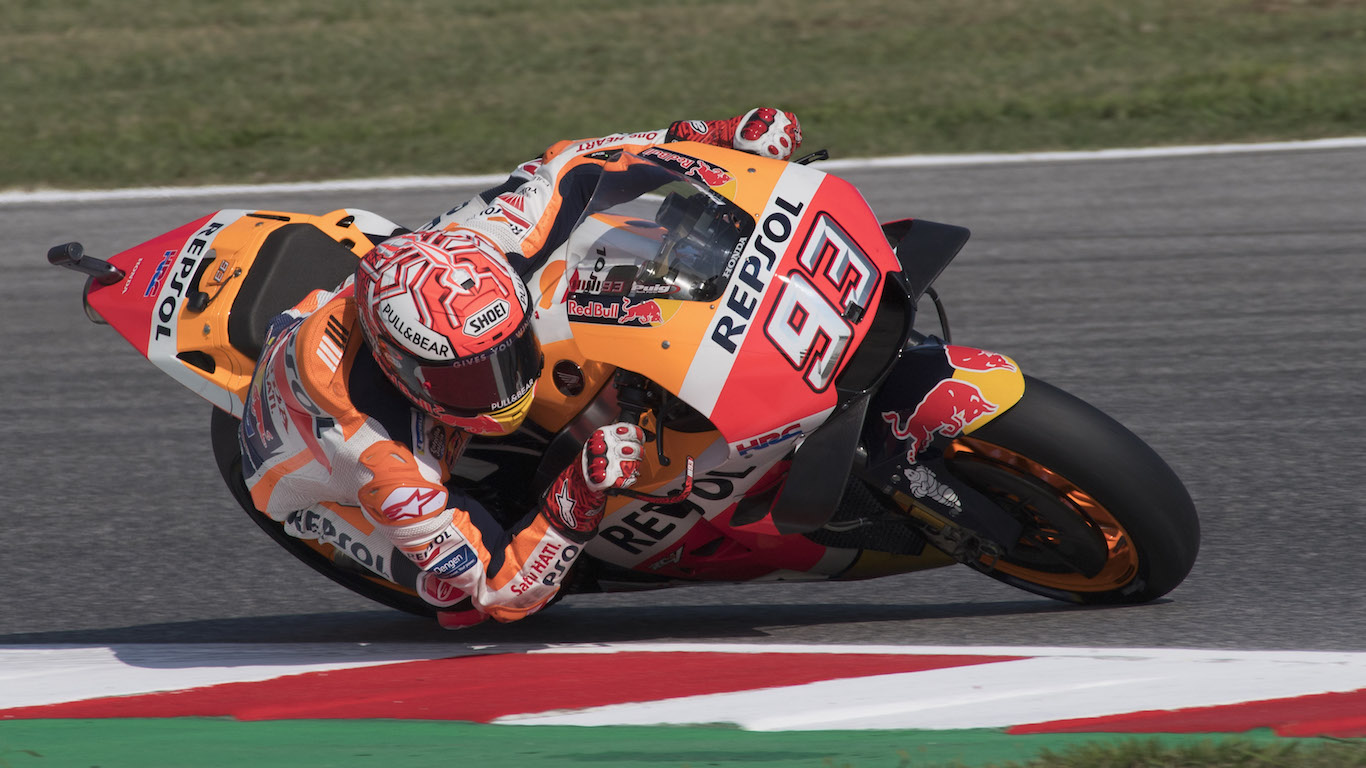
9. Repsol SA
>Country: Spain
>Asset Value: $72.99 billion
>2017 Revenue: $32.01 billion
>2017 Profit: $1.59 billion
>Return on invested capital: 3%
>3-Year Growth rate: -1.3%
Repsol reported total proved hydrocarbon reserves of 2.36 billion barrels of oil equivalent at the end of 2017. Of that, 26% (617 million barrels) were liquids and the rest was natural gas. Proved reserves totaling 504 million barrels are located in North America while 1.49 billion barrels are located in South America thanks to the 1999 acquisition of Argentina-based YPF. The company’s refining capacity is just over 1 million barrels a day and the company owns and operates more than 4,700 gas stations. Shares trade in Madrid, Berlin, Frankfurt, and Buenos Aires.
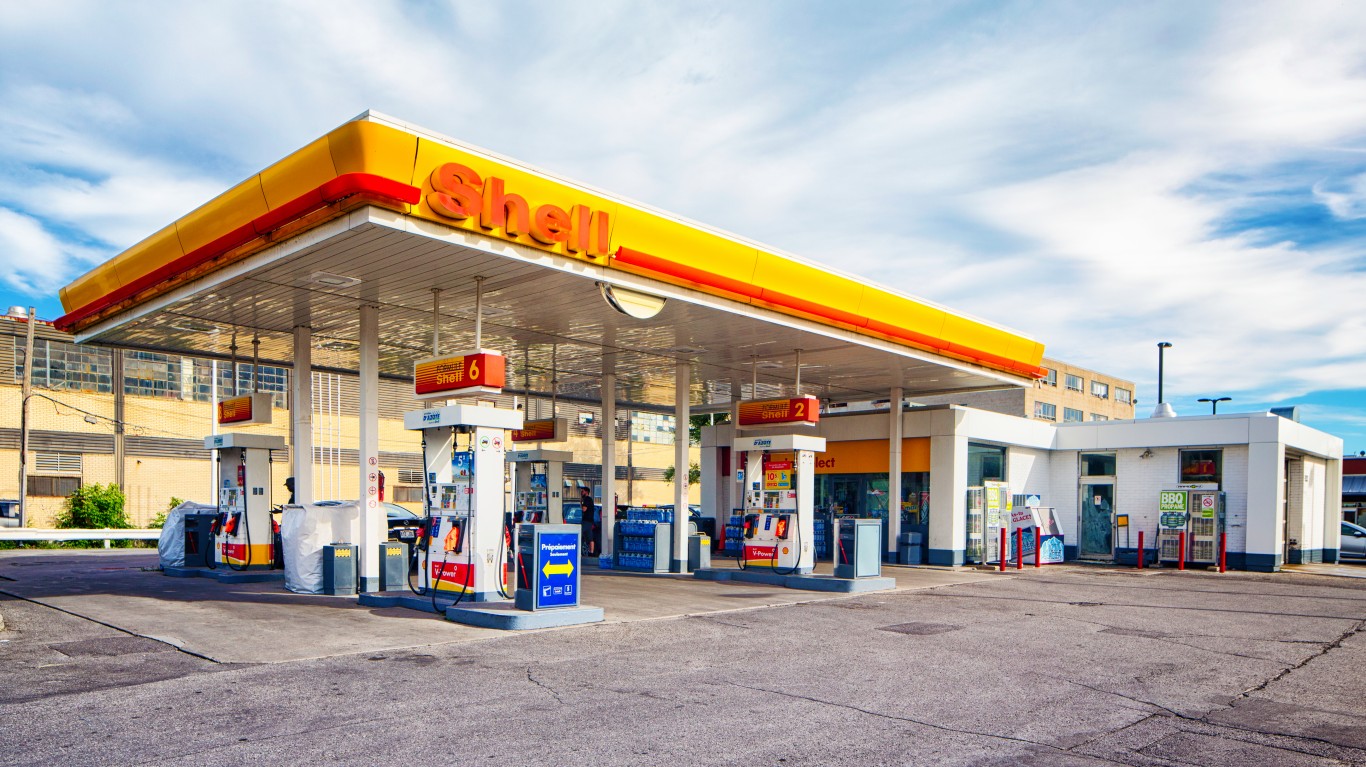
8. Royal Dutch Shell plc
>Country: Netherlands
>Asset Value: $411.28 billion
>2017 Revenue: $233.59 billion
>2017 Profit: $4.58 billion
>Return on invested capital: 2%
>3-Year Growth rate: -19.7%
Shell, as it is most commonly known, formally unified its Netherlands- and U.K.-based businesses in 2005 after nearly 100 years as a dual-listed company. In 2016, the company acquired Britain’s BG Group and became the world’s largest producer of liquefied natural gas (LNG). In its 2017 annual report the company said it had 4.61 billion barrels of proved oil reserves 40.4 trillion cubic feet of proved natural gas reserves. Including its synthetic crude, the company’s proved reserves totaled 12.23 billion barrels of oil equivalent. Shell’s global refining capacity totaled 2.93 million barrels a day at the end of last year of which 1.18 million barrels are based in the Americas. Shares trade in New York, London, and Amsterdam.
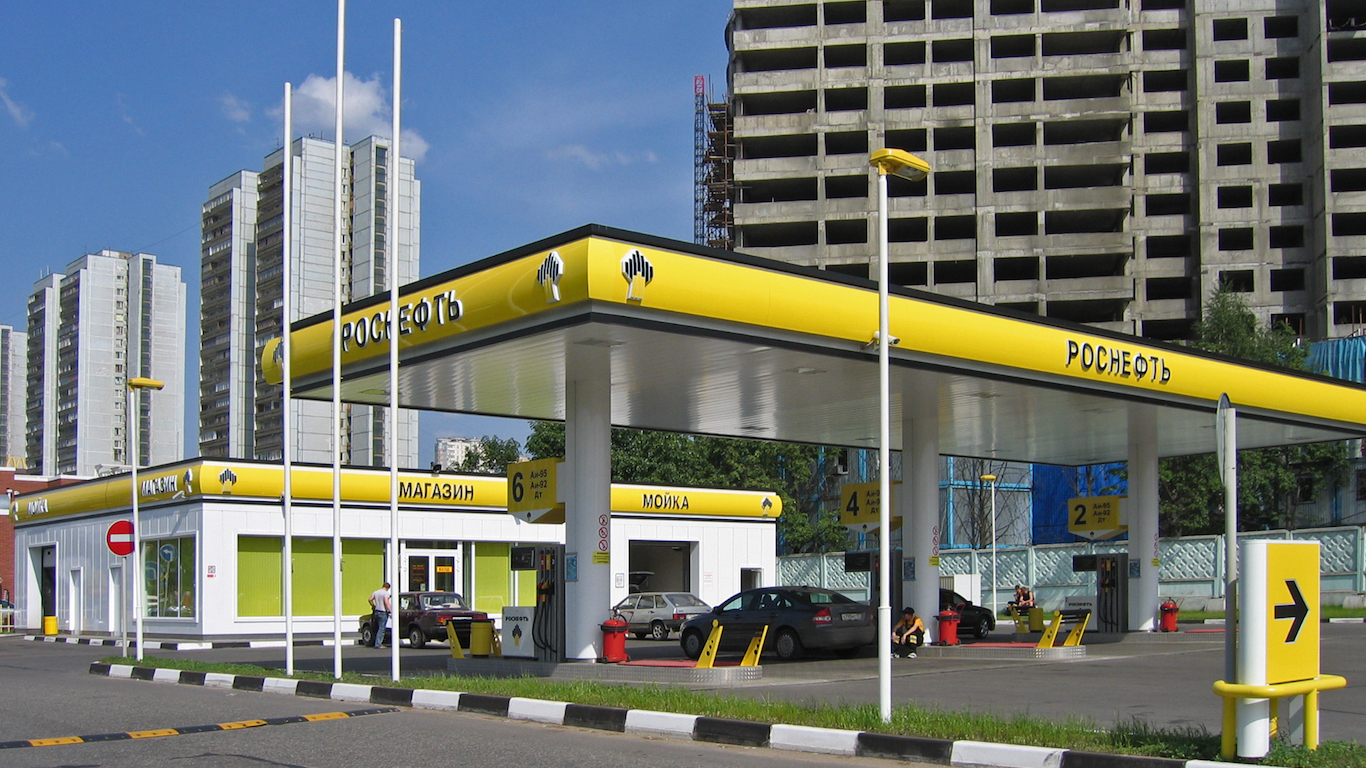
7. PJSC Rosneft Oil Co.
>Country: Russia
>Asset Value: $193.52 billion
>2017 Revenue: $83.6 billion
>2017 Profit: $3.18 billion
>Return on invested capital: 2%
>3-Year Growth rate: 1.6%
Public Joint Stock Company (PJSC) Rosneft is Russia’s state-controlled oil counterpart to Gazprom, the country’s state-controlled natural gas provider. The company controls 6% of the world’s total oil production, 41% of Russia’s oil production, and 36% of Russia’s refining capacity. At the end of last year Rosneft reported proved oil reserves of 39.9 billion barrels of oil equivalent and proved marketable gas reserves of nearly 2 trillion cubic meters. The chairman of the company’s board of directors is former German chancellor Gerhard Schroeder. The company’s stock trades on the Moscow Exchange.
[in-text-ad-2]
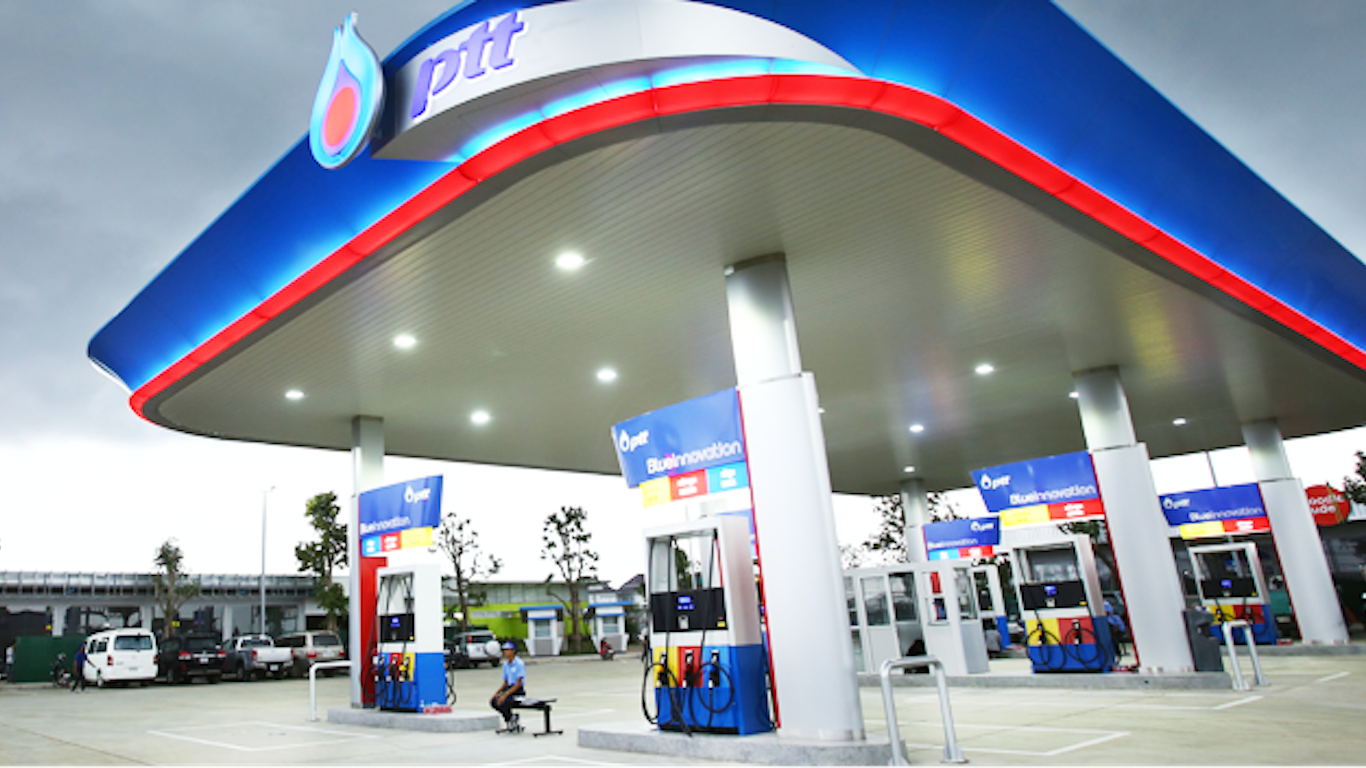
6. PTT plc
>Country: Thailand
>Asset Value: $65.62 billion
>2017 Revenue: $50.53 billion
>2017 Profit: $2.73 billion
>Return on invested capital: 5%
>3-Year Growth rate: -15.4%
PTT is Thailand’s state-controlled, publicly traded oil and and gas company. PTT Exploration and Production (PTTEP) holds the company’s oil and gas reserves. In its 2017 annual report, PTTEP reported proved crude oil and condensate reserves totaling 156 million barrels and proved natural gas reserves of 3.05 billion cubic feet. PTTEP contributed 10% of PTT’s net income in 2017. PTT also produces and sells coal and operates nine refining and petrochemical businesses. The company’s stock trades on the Bangkok exchange.
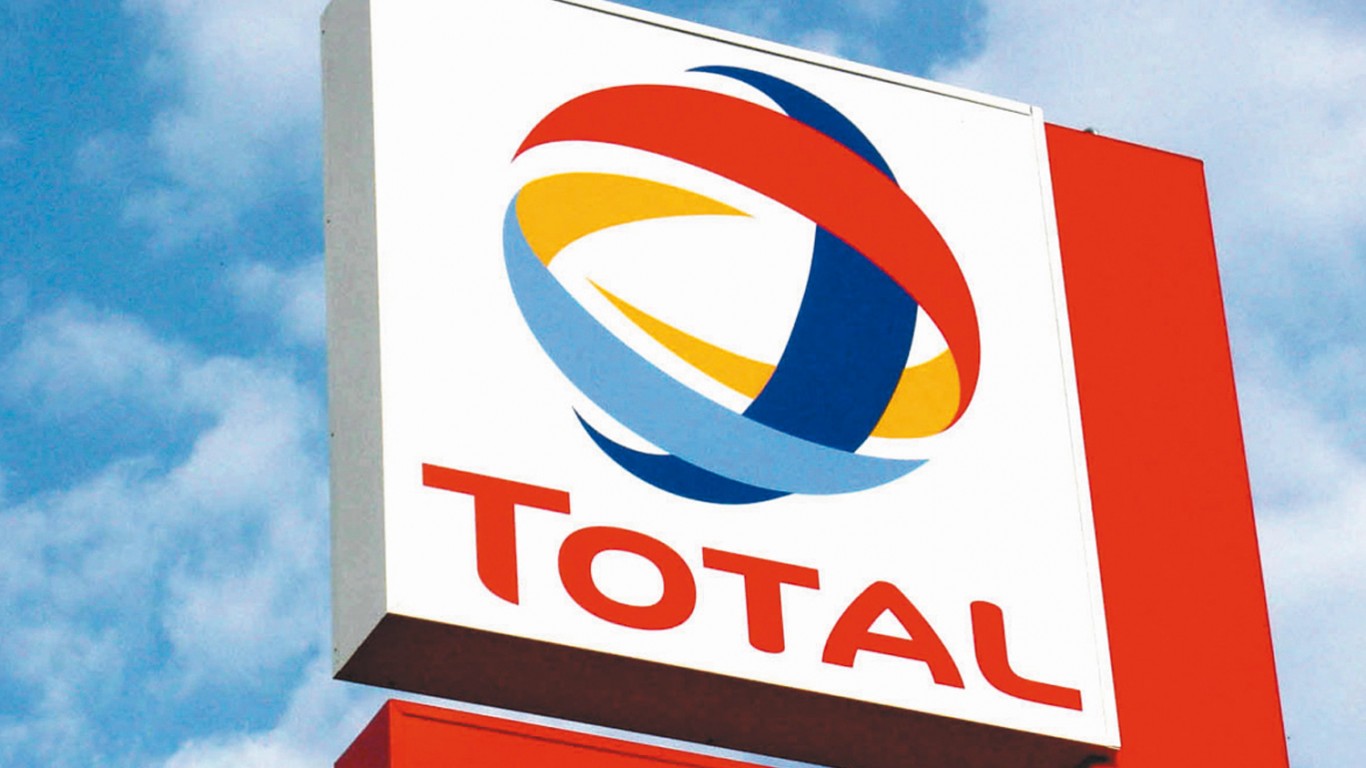
5. Total SA
>Country: France
>Asset Value: $230.98 billion
>2017 Revenue: $127.93 billion
>2017 Profit: $6.2 billion
>Return on invested capital: 4%
>3-Year Growth rate: -17.5%
At the end of 2017, France’s Total reported proved reserves of 11.48 billion barrels of oil equivalent of which 5.45 billion (47%) are liquids and the remainder is natural gas. The company’s reserves grew by 1.71 billion barrels of oil equivalent in the three-year period that ended last December. In that same period the company produced more than 2.5 million barrels of oil equivalent daily, or about 1.35 million barrels of liquids and 6.66 billion cubic feet of natural gas. More than a third of Total’s proved reserves are located in Europe and Central Asia and nearly a quarter are located in the Middle East and North Africa. Refinery throughput in 2017 totaled 1.83 million barrels a day. The company’s stock trades in New York and Paris.
[in-text-ad]
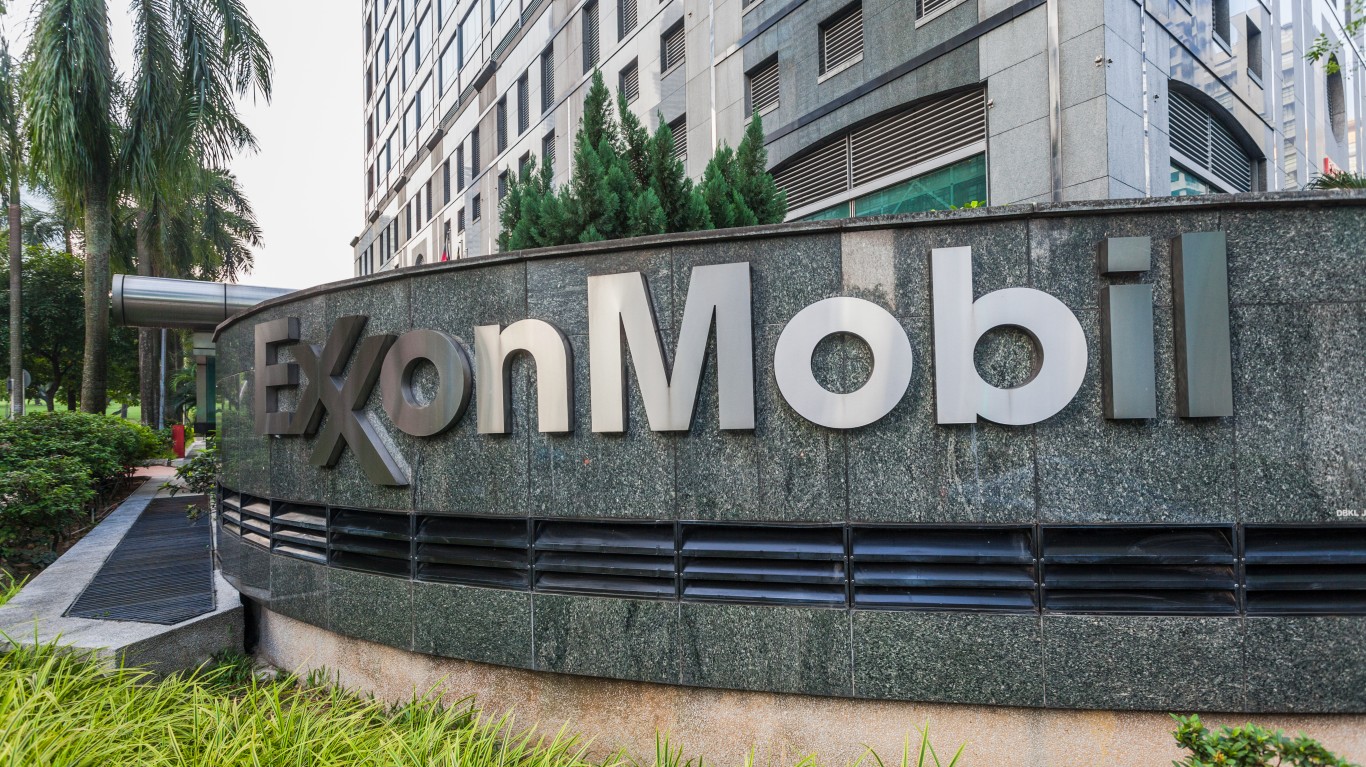
4. Exxon Mobil Corp.
>Country: United States
>Asset Value: $330.31 billion
>2017 Revenue: $197.52 billion
>2017 Profit: $7.84 billion
>Return on invested capital: 4%
>3-Year Growth rate: -20.3%
At one time in the middle of the first decade of the 21st century, Exxon Mobil was the most valuable company in the world with a market cap of around $500 billion. At the end of 2017 the company reported proved reserves of 7.75 billion barrels of oil and 56.5 trillion cubic feet of natural gas. Including all other resources Exxon’s proved reserves total 19.97 billion barrels of oil equivalent. Among publicly traded companies, Exxon holds the world’s largest proved reserves. The company’s global refining capacity is 4.9 million barrels a day with 1.72 million in the United States and 1.66 million in Europe. Worldwide, the company owns nearly 21,000 retail gas stations under the Exxon, Esso, and Mobil brands. Almost half of these stations are located in the United States. The company’s market cap is currently around $340 billion and its shares trade on the New York Stock Exchange.

3. PJSC Lukoil
>Country: Russia
>Asset Value: $87.98 billion
>2017 Revenue: $91.71 billion
>2017 Profit: $3.63 billion
>Return on invested capital: 5%
>3-Year Growth rate: -15.5%
Public Joint Stock Company (PJSC) Lukoil lists 16.02 billion barrels of proved hydrocarbon reserves of which 14.16 billion barrels are in Russia. Just over 12 billion barrels (75%) is crude oil. In 2017 the company produced 818 million barrels of oil equivalent hydrocarbons, of which 80% were liquids. The company’s refinery throughput totaled more than 492 million barrels last year. Lukoil holds 11% of Russia’s total proved reserves of oil, produces 15% of the country’s oil, and refines 15% of Russian gasoline. Lukoil had 5,258 gas stations at the end of last year, including 235 in 11 eastern U.S. states and the District of Columbia. Lukoil stock trades on the Moscow Stock Exchange.
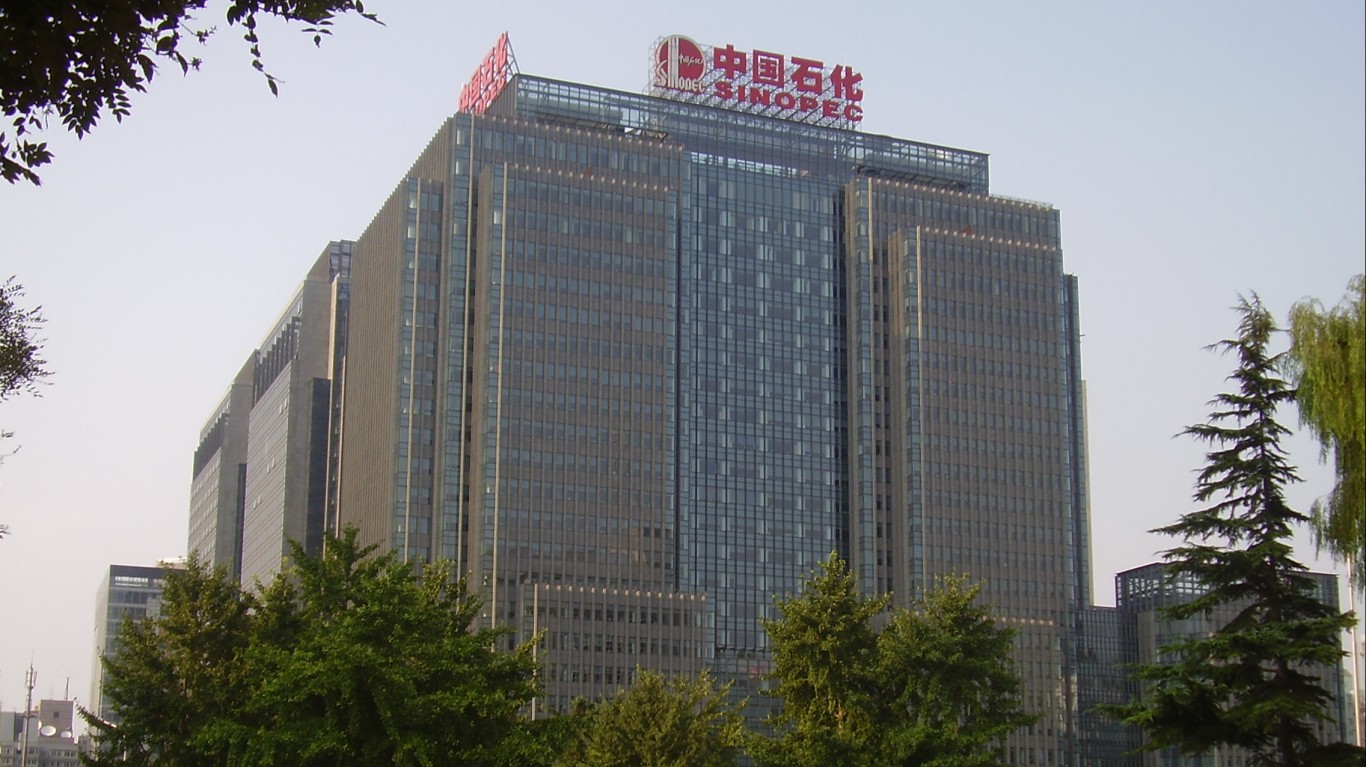
2. China Petroleum & Chemical Corp. (Sinopec)
>Country: China
>Asset Value: $220.53 billion
>2017 Revenue: $284.15 billion
>2017 Profit: $6.87 billion
>Return on invested capital: 5%
>3-Year Growth rate: -12.5%
Sinopec, as the company is known, is controlled by China Petrochemical Corp., one of China’s largest state-owned enterprises. The company operates primarily as an exploration and production company but also runs refining operations, chemical product manufacturing, and is the country’s largest gasoline retailer with more than 30,000 stations in the country. In 2017 Sinopec produced nearly 294 million barrels of oil and just over 912 billion cubic feet of natural gas. The company’s proved crude oil reserves totaled 1.6 billion barrels and proved natural gas reserves totaled nearly 7 trillion cubic feet. Sinopec stock trades in Hong Kong, London, and New York. The company’s market cap at the end of June 2018 was about $111 billion.
[in-text-ad-2]
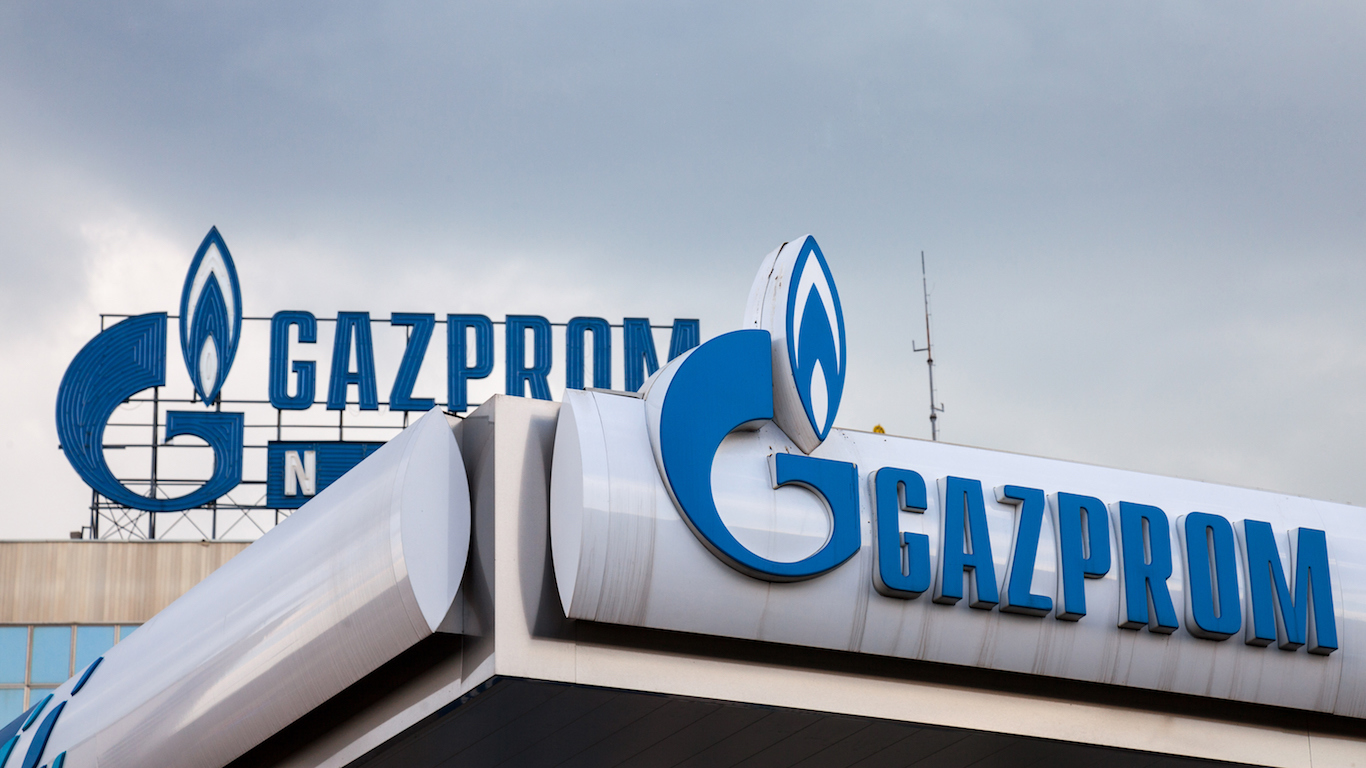
Although primarily a producer of natural gas, Gazprom also produces and refines crude oil. The company’s assets include one-sixth of the world’s proved natural gas reserves and Gazprom produced about 12% of the world’s gas in 2017. Gazprom pumped just under 1 million barrels of oil last year and produced about 16.67 trillion cubic feet of natural gas. The company also owns and operates 172,100 kilometers of pipelines in Russia. Shares trade on the Moscow Stock Exchange and the company’s market cap at the end of 2017 was $53.6 billion, a drop of 11% year over year.
Methodology
The following list of the world’s 10 largest integrated oil and gas companies includes three Russian firms, two Chinese firms, and one firm each from the United States, France, the Netherlands, Spain, and Thailand. The list has been drawn from S&P Global Platts’ 2017 survey of global energy companies, which ranks companies using a proprietary formula that assigns a numerical value to a company’s asset value, revenue, profits, and return on invested capital (ROIC). Platts also calculates a three-year compound growth rate as a percentage of revenue.
Platts calculates ROIC using the following equation: ROIC = [(Income before extraordinary items) – (Available for common stock)] ÷ (Total invested capital) x 100. “Income before extraordinary items” is net income less preferred dividends and “total invested capital” is the sum of total debt, the value of preferred stock, noncontrolling interest, and total common equity.
The rankings were further divided into nine categories: coal and consumable fuels; diversified utilities; electric utilities; exploration and production; gas utilities; independent power producers; integrated oil and gas; refining and marketing; and storage and transfer. The data were provided to Platts by S&P Global Market Intelligence in June 2017.
Want retirement to come a few years earlier than you’d planned? Or are you ready to retire now, but want an extra set of eyes on your finances?
Now you can speak with up to 3 financial experts in your area for FREE. By simply clicking here you can begin to match with financial professionals who can help you build your plan to retire early. And the best part? The first conversation with them is free.
Click here to match with up to 3 financial pros who would be excited to help you make financial decisions.
Have questions about retirement or personal finance? Email us at [email protected]!
By emailing your questions to 24/7 Wall St., you agree to have them published anonymously on a673b.bigscoots-temp.com.
By submitting your story, you understand and agree that we may use your story, or versions of it, in all media and platforms, including via third parties.
Thank you for reading! Have some feedback for us?
Contact the 24/7 Wall St. editorial team.